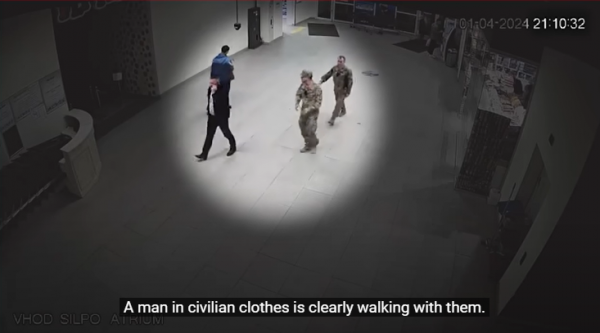In 2011, 12-31 journalists were killed because of their work, according to the International Press Institute (IPI) Death Watch.
Reporters and cameramen faced a range of threats. Some were in the wrong place at the wrong time, on the job when natural disaster struck or bombs exploded. But almost all of the journalists killed in 2011 were local reporters and cameramen covering local conflicts, corruption and other illegal activities.
Tragically, the likelihood that the perpetrators will be brought to justice is close to zero. Impunity is fuelling the murders.
The numbers are getting worse. The toll for 2011 was the second highest on record since IPI started its Death Watch. In 2001, 55 journalists were killed. In 2002, 19 countries appeared on the IPI Death Watch list. In 2011, there were 40 – more than in any year of the past decade.
“We mourn the loss of the 103 journalists who were killed this year,” said IPI Executive Director Alison Bethel McKenzie. “To get the story you need to go to dangerous places, whether that is the frontline in a war zone or the top of a crumbling building or the bottom of the ocean, and we salute our colleagues who take those risks for us every day.
“IPI calls on governments everywhere to recognize the special role that journalists play in society and ensure their safety and their ability to report freely.”
Mexico was the deadliest country for journalists in 2011, with 10 killed. Iraq, with nine journalists killed – most the victims of bombings – was the second deadliest country in the world in 2011. Six journalists were killed in Yemen, Pakistan and Honduras respectively. Libya and Brazil were the fourth deadliest countries in the world, with five journalists killed in each. The Philippines, where four journalists were killed, was the fifth deadliest country.
With 36 journalists killed, Latin America was the deadliest region for journalists in 2011, confirming a trend of increasing violence against journalists in the Western hemisphere that IPI and other international groups have sought to address for some years. After Mexico, other deadly countries in the region included Honduras, with six journalists killed, and Brazil, where five journalists lost their lives because of their work.
Turmoil in the Arab world pushed up the death count for journalists there. A total of 21 were killed in the Middle East. Outside of Iraq, those covering uprisings in the region were most vulnerable to attack. In Yemen, six journalists were killed while covering anti-government protests. One Syrian journalist was killed for filming a demonstration, and one prolific videographer whose work had been sent to various international demonstrations was killed at the end of the year.
In North Africa, eight journalists were killed while reporting on protests and civil conflicts during the Arab Spring. Five journalists were killed in Libya between March and April, 2011, two in Egypt and one in Tunisia. One reporter, Ahmed Nezar, was killed in Algeria in May, for reasons that were not immediately clear.
A total of 17 journalists died in Asia this year, with Pakistan and the Philippines emerging again as the two deadliest Asian countries for journalists, and as the third and fifth most dangerous in the world, respectively.
In Pakistan, of the six journalists whose deaths have been confirmed by local observers to be in connection with their journalistic work, two were killed in a series of bomb blasts on which they were reporting. The remaining four were victims of targeted killings.
The four journalists killed this year in the Philippines all hosted radio programs that aired criticism of local politicians and exposed corruption.
A total of nine journalists were killed in sub-Saharan Africa this year, according to information received by IPI. Three journalists were killed in Somalia, where a 20-year long civil war has destabilised the entire country. Journalists were also killed this year in Cote d’Ivoire, the Democratic Republic of Congo, Nigeria, Sierra Leone, and Uganda. All of the cases involved targeted killings in which the journalists were either shot at or stabbed. In many cases the motive behind the murders remained unclear as investigations either did not happen or did not lead to charges being pressed against any suspects.
A total of seven journalists were killed this year in Europe: three in Russia and Turkey, respectively, and one in Azerbaijan.
All three journalists killed in Russia were shot in targeted killings, bringing the total number of journalists killed there since 2000 up to 40.
Three journalists were killed in Turkey in 2011: Two died in an aftershock that hit the city of Van where they were covering the aftermath of the 23 October, 2011 earthquake. Journalist and human rights activist Suzan Zengin, who spent two years in pre-trial detention for alleged ties to an illegal organisation, reportedly died as a result of the government’s alleged failure to provide adequate medical care during her incarceration.
Journalists must contend not just with powerful enemies and the threat of injury or death in conflict zones. In 2011, eight journalists died in crashes while flying to report from remote areas. Five journalists from Televisión Nacional de Chile (TVN) died in an accident involving a Chilean Air Force plane as they were on their way to the Juan Fernández archipelago. Two journalists with the Australian national broadcaster, ABC, were killed in a helicopter crash on 18 August, 2011 while working on a story in the Outback. Thai cameraman Sornwichai Khatannukul was among nine people on board an army Black Hawk helicopter that crashed inside Burma on 19 July in an operation to retrieve the bodies of five soldiers killed in a helicopter crash on 16 July, 2011.


